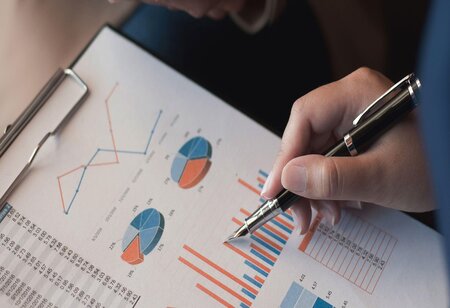Top Ways to Measure Retail Business Performance
By Tanuja A Akkannavar
 Knowing which marketing initiatives and approaches generate the most sales for your retail business will help you build on your achievements while avoiding costly mistakes. However, determining efficiency and profitability necessitates more than merely checking to see if the company is profitable each month. Adopting indicators that reflect the business's strengths as well as areas that need change is an important way to determine what works best.
Knowing which marketing initiatives and approaches generate the most sales for your retail business will help you build on your achievements while avoiding costly mistakes. However, determining efficiency and profitability necessitates more than merely checking to see if the company is profitable each month. Adopting indicators that reflect the business's strengths as well as areas that need change is an important way to determine what works best.
Why Measure Retail Performance?
Monitoring the success of your store can take time and effort, but the future rewards are well worth it. First, your meticulously collected data will reveal new problems that need your attention. If you act quickly, you might be able to tweak your way to a solution until the problem escalates into a full-fledged crisis that necessitates all answers. Choose observable metrics that represent the business' strategic strategy and can be tracked over a fixed time period to assess the most important performance. If you have several divisions in your larger retail operation, keep in mind that each one may have its own set of Measures.
Analyzing and strategizing using these critical metrics is a strategic way to rise above and thrive amongst your competitors. Following are some of the top ways to measure retail business performance:-
1. Number of Customers –
The most straightforward metric for a retail sector is the number of customers, they are the retail business's only source of income. Measuring customer numbers is simple in the e-commerce sector, however, interpreting the analytics needs some practice, you will most likely use Google Analytics, but don't forget that your e-commerce application should have some customer statistics as well. Define your standards and correlate them to previous years and present results.
2. Transaction Volume –
The revenue figure, also known as the sales-per-customer number, informs a merchant of the average sales price of a transaction. This method would be used by a store that relies on its sales representatives to make a sale to measure employee productivity.
3. Inventory Turnover –
In retail, money is power, and your inventory is the greatest drain on your cash. Selling high rated items has the ability to produce sales, but only if customers purchase the items. For the manufacturer, unsold inventory is a costly investment, in a way if you say whether you have overstocked or understocked on an item is to monitor your turnover.
4. Accessory Percentage –
In a retail business, the profit is made from the subsequent item sold, not the first. As a result, understanding accessory sales will help you figure out which products are profitable. Simply divide overall sales by accessory sales to arrive at this figure. Similar to the Products per purchase above, this will tell you how well your workers are at adding additional items to the sale.
5. Gross Margin –
Before accounting for any other expenses, gross profit is the difference between sales and expense. It's usually determined by subtracting the purchase price of an item from the cost of goods sold. Knowing how much it cost you to buy or manufacture the item you are selling is simple business math.
These are only a few measures using which a retail store's performance can be evaluated. It becomes better to recognize where sales are made, by which employees, and how the business can optimize sales growth as retailers monitor these numbers month after month and year after year.




